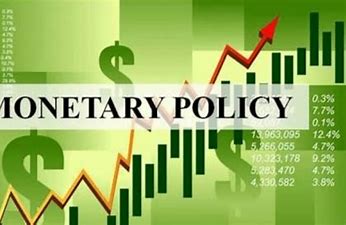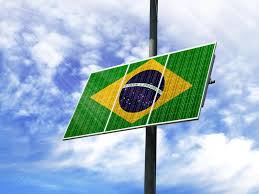For Bradesco, the country is experiencing a supply shock and monetary policy has low effectiveness to control prices
09/03/2022
/i.s3.glbimg.com/v1/AUTH_37554604729d4b2f9f3eb9ad8a691345/internal_photos/bs/2022/b/X/jgAB4nQVAmeq8ypBVKAQ/09bra-200-revisa-a2-img01.jpg)
Fernando Honorato Barbosa — Foto: Leo Pinheiro/Valor
The banks Bradesco and BNP Paribas raised their projections for inflation in 2022 due to the global price shock. Bradesco revised its forecast to 6% from 5.4% due to the global price shock. For 2023, still counting on a certain reversal of these shocks, the projection went to 3.5% from 3.3%. BNP raised to 7% from 6% the IPCA (Brazil’s benchmark inflation index) for this year but maintained the 4% projected for 2023.
Bradesco’s team, led by Fernando Honorato Barbosa, also says it now believes that the Central Bank will take the Selic — Brazil’s benchmark interest rate — to 12.75%, and no longer 11.75%, and postpone the beginning of interest rate cuts.
“The country is experiencing a classic supply shock in which monetary policy has low effectiveness to control prices. But given the already high level of inflation and significantly above target, the Central Bank is likely to raise interest rates a little more than we had imagined and opt for a more gradual convergence of inflation, even beyond 2023,” Bradesco wrote in a report.
Next year’s GDP will already be significantly impacted by monetary tightening and there is a probability of some reversal of the commodity shock in the next 12 to 18 months, the team says. “Therefore, we understand that the Central Bank will opt for a cautious stance at this time that will keep it alert to inflation, but without exaggerating the monetary policy dosage. This will avoid sacrificing growth more than necessary if there is a reversal, at least partial, of the global scenario,” says the report.
Bradesco ponders that it is still difficult to predict the outcome of the war between Russia and Ukraine and says that this may significantly alter the numbers of the scenario. “In any case, the global economic effects are likely to be more inflation and less growth, results that we may also see in Brazil.” Bradesco projects 0.5% growth for the Brazilian economy in 2022 and 2023. Global GDP growth in 2022 was revised from 4.3% to 4%.
The Brazilian economy shows some resilience to war, in Bradesco’s assessment, but rising inflation and interest rates may limit growth starting in the second half of the year.
“Finally, the exchange rate tends to be a little more appreciated than we imagined because of the rise in commodity prices in a context of high local interest rates and low solvency risk,” says the team. The bank reduced the projection for the exchange rate to R$5.3 to the dollar from R$5.5.
“Once supply shocks fade, we expect inflation to return to expectation levels, not the target level,” said Laiz Carvalho, Gustavo Arruda and Michelle Hwang in a BNP report.
The bank also started to project a Selic rate of 13.25% in 2022, compared with 12.25% in the last forecast. The projection for 2023 went to 10.5% from 9.5%. Now, for this year, BNP Paribas expects a rise of 100 basis points in the Selic in March, the same in May and 50 bp in June. For the team, the Central Bank is likely to start cutting the rate only in the second quarter of 2023.
“The conflict is expected to reduce global wheat production and fertilizer exports and raise oil prices, affecting grain prices and costs for the protein sector,” the team says.
This is compounded by domestic sources of inflation, which include adverse weather conditions, adjustment of service prices to compensate for pandemic losses and supply chain disruptions — the latter, globally, is expected to improve less than previously anticipated also due to the Russia-Ukraine war.
In the case of fuels, as diesel and gasoline account for about 6% of Brazilian inflation, if oil barrel prices remain at their current higher levels, the impact on the IPCA could be significant, of about 1.5 percentage points, the report indicates.
Source: Valor International

/i.s3.glbimg.com/v1/AUTH_37554604729d4b2f9f3eb9ad8a691345/internal_photos/bs/2022/O/i/44JSsBQc2haDEeg6R64w/09fin-100-private-c6-img01.jpg)
/i.s3.glbimg.com/v1/AUTH_37554604729d4b2f9f3eb9ad8a691345/internal_photos/bs/2022/T/W/XBDIfhSTqKQtFcHO4mwg/09emp-100-anfa-b4-img01.jpg)

/i.s3.glbimg.com/v1/AUTH_37554604729d4b2f9f3eb9ad8a691345/internal_photos/bs/2022/A/n/SAPjI0T0C8T2ULfK6YGg/uber-eats.jpg)
/i.s3.glbimg.com/v1/AUTH_37554604729d4b2f9f3eb9ad8a691345/internal_photos/bs/2022/P/6/EB07I5SMe5na1B3Bl15g/wheat-production-in-russia-andrey-rudakov-bloomberg.png)
/i.s3.glbimg.com/v1/AUTH_37554604729d4b2f9f3eb9ad8a691345/internal_photos/bs/2022/Z/g/RmZ6TLSKi9XcLDMw13EQ/embraer-reproducao.png)

/i.s3.glbimg.com/v1/AUTH_37554604729d4b2f9f3eb9ad8a691345/internal_photos/bs/2022/U/9/6nNA5MT6iIAv8Z1OvBUQ/itaipu-20220225sc06883.jpg)
/i.s3.glbimg.com/v1/AUTH_37554604729d4b2f9f3eb9ad8a691345/internal_photos/bs/2022/M/O/PKOkKXTFGBBv1LI1OkOQ/barroso-300721luizbarroso03.jpg)